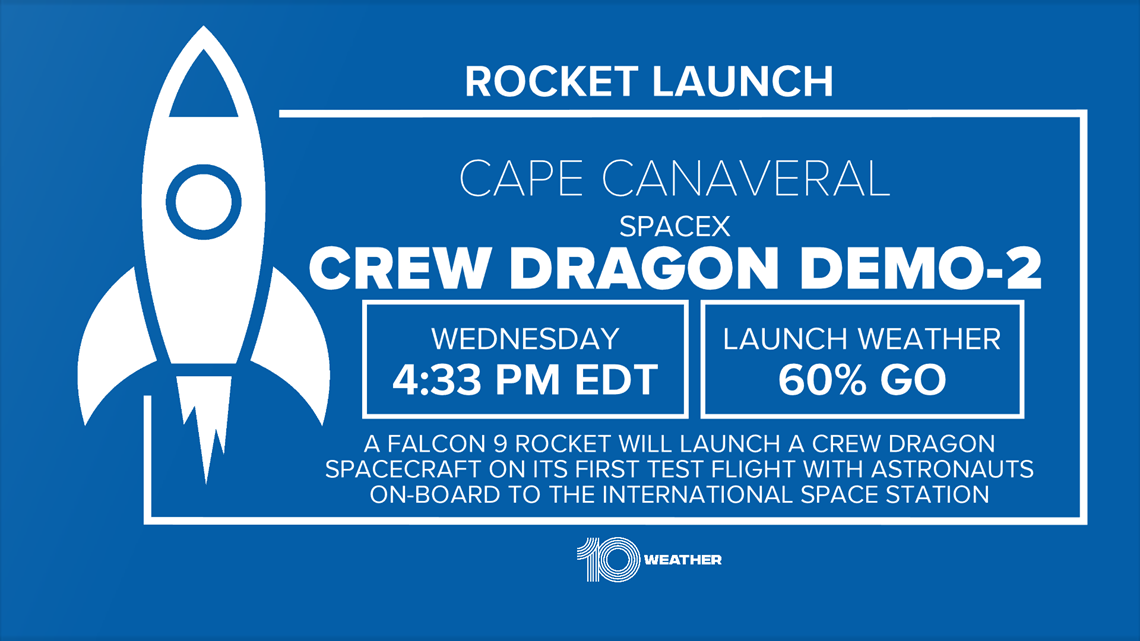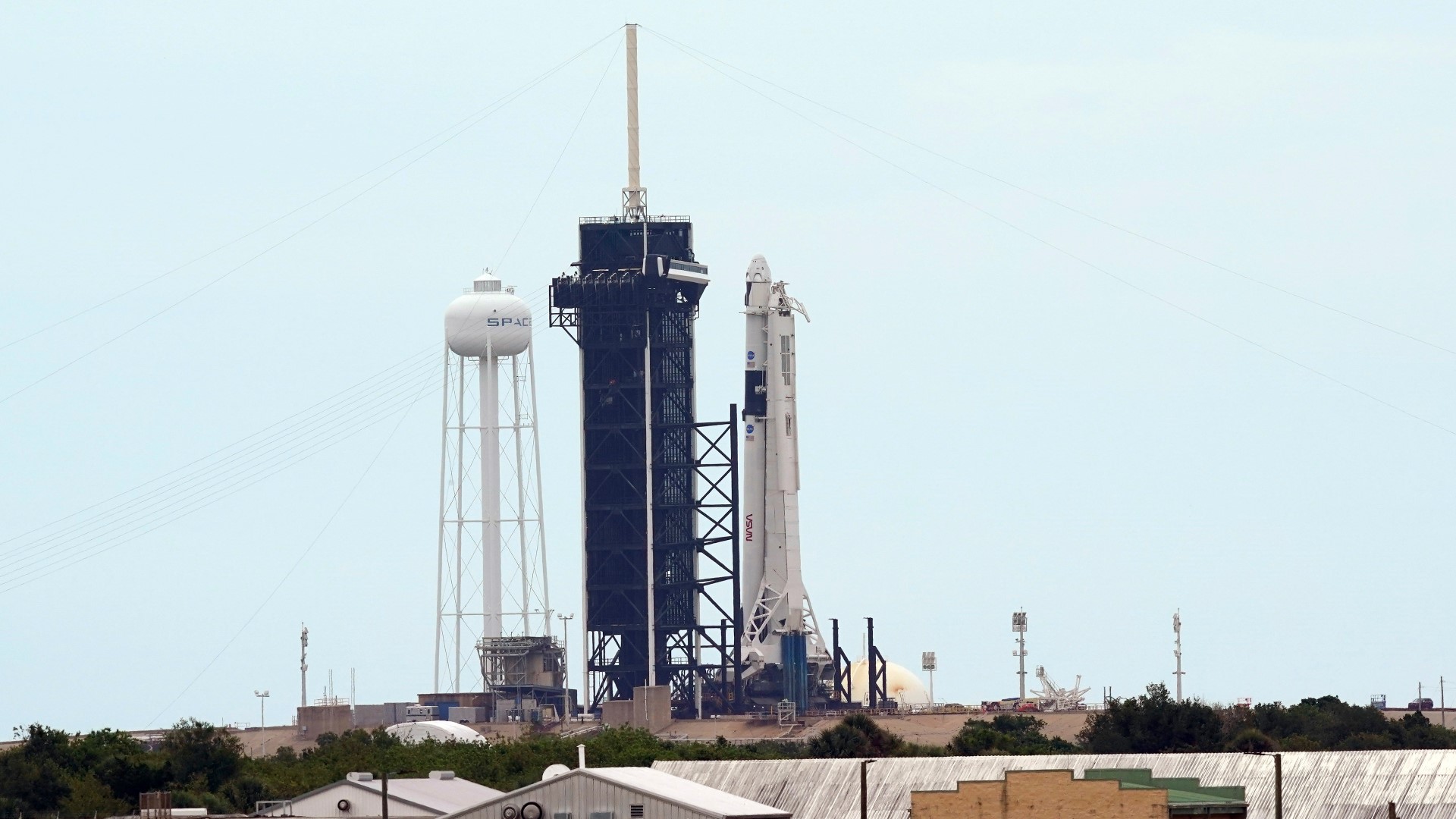CAPE CANAVERAL, Fla. — It will be all eyes to the sky Wednesday evening for a historic rocket launch into space.
For the first time in nine years, the U.S. will launch American astronauts, on an American made spacecraft, from American soil at the Kennedy Space Center.
There might just be one problem: the weather forecast.
Space Force forecasters as of Monday afternoon now predict 60-percent "go" conditions for the 4:33 p.m. Wednesday liftoff from Kennedy Space Center's Launch Complex 39A as Florida's summer-like showers and storms could put a damper on the day.
Just a few of the key concerns for the launch are 'Flight Through Precipitation', 'Anvil Cloud Rule' and 'Cumulus Cloud Rule.'
But, what does that mean?
Those are some of the rules laid out in NASA's Falcon 9 Crew Dragon Weather Criteria.
- Do not launch if the sustained wind at the 162-foot level of the launch pad exceeds 30 mph.
- Do not launch through upper-level conditions containing wind shear that could lead to control problems for the launch vehicle.
- Do not launch for 30 minutes after lightning is observed within 10 nautical miles of the launch pad or the flight path, unless specified conditions can be met.
- Do not launch within 10 nautical miles of an attached thunderstorm anvil cloud, unless temperature and time-associated distance criteria can be met.
- Do not launch within 10 nautical miles of a detached thunderstorm anvil cloud.
- Do not launch within three nautical miles of a thunderstorm debris cloud, unless specific time associated distance criteria can be met.
- Do not launch within five nautical miles of disturbed weather clouds that extend into freezing temperatures and contain moderate or greater precipitation, unless specific time-associated distance criteria can be met.
- Do not launch for 15 minutes if field mill instrument readings within five nautical miles of the launch pad exceed +/- 1,500 volts per meter, or +/- 1,000 volts per meter if specified criteria can be met.
- Do not launch through a cloud layer greater than 4,500 feet thick that extends into freezing temperatures, unless other specific criteria can be met.
- Do not launch within 10 nautical miles of cumulus clouds with tops that extend into freezing temperatures, unless specific height-associated distance criteria can be met.
- Do not launch within 10 nautical miles of the edge of a thunderstorm that is producing lightning within 30 minutes after the last lightning is observed.
- Do not launch through cumulus clouds formed as the result of or directly attached to a smoke plume, unless time-associated criteria can be met.
- Do not launch if downrange weather indicates a violation of limits at splashdown in case of Dragon launch escape.
- Do not launch if downrange weather shows a high probability of violating limits at splashdown in case of Dragon launch escape.



